| Swiss Confederation |
|||||
|---|---|---|---|---|---|
|
|||||
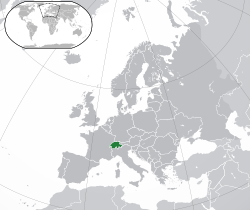
Location of Switzerland (green)
in Europe (green & dark grey)
|
|||||
| Capital | None (de jure) Bern (de facto)[note 1][1][2] 46°57′N 7°27′E |
||||
| Largest city | Zürich | ||||
| Official languages | German French Italian Romansh |
||||
| Demonym | English: Swiss, German: Schweizer(in), French: Suisse(sse), Italian: svizzero/svizzera, or elvetico/elvetica, Romansh: Svizzer/Svizra |
||||
| Government | Federal semi-direct democracy under multi-party parliamentary directorial republic | ||||
| Walter Thurnherr | |||||
| Legislature | Federal Assembly | ||||
| Council of States | |||||
| National Council | |||||
| History | |||||
| c. 1300[note 2] (traditionally 1 August 1291) | |||||
| 24 October 1648 | |||||
| 7 August 1815 | |||||
| 12 September 1848[note 3][3] | |||||
| Area | |||||
|
• Total
|
41,285 km2 (15,940 sq mi) (135th) | ||||
|
• Water (%)
|
4.2 | ||||
| Population | |||||
|
• 2016 estimate
|
8,401,120[4] (99th) | ||||
|
• 2015 census
|
8,327,126[5] | ||||
|
• Density
|
202/km2 (523.2/sq mi) (63rd) | ||||
| GDP (PPP) | 2016 estimate | ||||
|
• Total
|
$493.126 billion[6] (39th) | ||||
|
• Per capita
|
$59,150[6] (9th) | ||||
| GDP (nominal) | 2016 estimate | ||||
|
• Total
|
$651.770 billion[6] (19th) | ||||
|
• Per capita
|
$78,179[6] (2nd) | ||||
| Gini (2015) | low · 19th |
||||
| HDI (2015) | very high · 2nd |
||||
| Currency | Swiss franc (CHF) | ||||
| Time zone | CET (UTC+1) | ||||
|
• Summer (DST)
|
CEST (UTC+2) | ||||
| Date format | dd.mm.yyyy (AD) | ||||
| Drives on the | right | ||||
| Calling code | +41 | ||||
| Patron saint | St Nicholas of Flüe | ||||
| ISO 3166 code | CH | ||||
| Internet TLD | .ch | ||||
|
Website
www |
|||||
The establishment of the Old Swiss Confederacy dates to the late medieval period, resulting from a series of military successes against Austria and Burgundy. Swiss independence from the Holy Roman Empire was formally recognized in the Peace of Westphalia in 1648. The country has a history of armed neutrality going back to the Reformation; it has not been in a state of war internationally since 1815 and did not join the United Nations until 2002. Nevertheless, it pursues an active foreign policy and is frequently involved in peace-building processes around the world.[9] In addition to being the birthplace of the Red Cross, Switzerland is home to numerous international organisations, including the second largest UN office. On the European level, it is a founding member of the European Free Trade Association, but notably not part of the European Union or the European Economic Area. However, it participates in the Schengen Area and the European Single Market through bilateral treaties.
Spanning the intersection of Germanic and Romance Europe, Switzerland comprises four main linguistic and cultural regions: German, French, Italian and Romansh. Although the majority of the population are German speaking, Swiss national identity is rooted in a common historical background, shared values such as federalism and direct democracy,[10] and Alpine symbolism.[11][12] Due to its linguistic diversity, Switzerland is known by a variety of native names: Schweiz [ˈʃvaɪts] (German);[note 5] Suisse [sɥis(ə)] (French); Svizzera [ˈzvittsera] (Italian); and Svizra [ˈʒviːtsrɐ] or [ˈʒviːtsʁːɐ] (Romansh).[note 6] On coins and stamps, Latin (frequently shortened to "Helvetia") is used instead of the four living languages.
Switzerland is one of the most developed countries in the world, with the highest nominal wealth per adult and the eighth-highest per capita gross domestic product according to the IMF.[13][14] Switzerland ranks at or near the top globally in several metrics of national performance, including government transparency, civil liberties, quality of life, economic competitiveness, and human development. Zürich and Geneva have each been ranked among the top cities in the world in terms of quality of life, with the former ranked second globally, according to Mercer.[15]
Contents
Etymology
The English name Switzerland is a compound containing Switzer, an obsolete term for the Swiss, which was in use during the 16th to 19th centuries.[16] The English adjective Swiss is a loan from French Suisse, also in use since the 16th century. The name Switzer is from the Alemannic Schwiizer, in origin an inhabitant of Schwyz and its associated territory, one of the Waldstätten cantons which formed the nucleus of the Old Swiss Confederacy. The Swiss began to adopt the name for themselves after the Swabian War of 1499, used alongside the term for "Confederates", Eidgenossen (literally: comrades by oath), used since the 14th century. The data code for Switzerland, CH, is derived from Latin Confoederatio Helvetica (English: Helvetic Confederation).The toponym Schwyz itself was first attested in 972, as Old High German Suittes, ultimately perhaps related to swedan ‘to burn’ (cf. Old Norse svíða ‘to singe, burn’), referring to the area of forest that was burned and cleared to build.[17] The name was extended to the area dominated by the canton, and after the Swabian War of 1499 gradually came to be used for the entire Confederation.[18][19] The Swiss German name of the country, Schwiiz, is homophonous to that of the canton and the settlement, but distinguished by the use of the definite article (d'Schwiiz for the Confederation,[20] but simply Schwyz for the canton and the town).[21]
The Latin name Confoederatio Helvetica was neologized and introduced gradually after the formation of the federal state in 1848, harking back to the Napoleonic Helvetic Republic, appearing on coins from 1879, inscribed on the Federal Palace in 1902 and after 1948 used in the official seal.[22] (The ISO banking code, "CHF" for the Swiss franc, is taken from the state's Latin name). Helvetica is derived from the Helvetii, a Gaulish tribe living on the Swiss plateau before the Roman era.
Helvetia appears as a national personification of the Swiss confederacy in the 17th century with a 1672 play by Johann Caspar Weissenbach.[23]
History
Switzerland has existed as a state in its present form since the adoption of the Swiss Federal Constitution in 1848. The precursors of Switzerland established a protective alliance at the end of the 13th century (1291), forming a loose confederation of states which persisted for centuries.Early history
The oldest traces of hominid existence in Switzerland date back about 150,000 years.[24] The oldest known farming settlements in Switzerland, which were found at Gächlingen, have been dated to around 5300 BC.[24]
Founded in 44 BC by Lucius Munatius Plancus, Augusta Raurica was the first Roman settlement on the Rhine and is now among the most important archaeological sites in Switzerland.[25]
The first and second century AD were an age of prosperity for the population living on the Swiss plateau. Several towns, like Aventicum, Iulia Equestris and Augusta Raurica, reached a remarkable size, while hundreds of agricultural estates (Villae rusticae) were founded in the countryside.
Around 260 AD, the fall of the Agri Decumates territory north of the Rhine transformed today's Switzerland into a frontier land of the Empire. Repeated raids by the Alamanni tribes provoked the ruin of the Roman towns and economy, forcing the population to find shelter near Roman fortresses, like the Castrum Rauracense near Augusta Raurica. The Empire built another line of defence at the north border (the so-called Donau-Iller-Rhine-Limes), but at the end of the fourth century the increased Germanic pressure forced the Romans to abandon the linear defence concept, and the Swiss plateau was finally open to the settlement of Germanic tribes.
In the Early Middle Ages, from the end of the 4th century, the western extent of modern-day Switzerland was part of the territory of the Kings of the Burgundians. The Alemanni settled the Swiss plateau in the 5th century and the valleys of the Alps in the 8th century, forming Alemannia. Modern-day Switzerland was therefore then divided between the kingdoms of Alemannia and Burgundy.[24] The entire region became part of the expanding Frankish Empire in the 6th century, following Clovis I's victory over the Alemanni at Tolbiac in 504 AD, and later Frankish domination of the Burgundians.[26][27]
Throughout the rest of the 6th, 7th and 8th centuries the Swiss regions continued under Frankish hegemony (Merovingian and Carolingian dynasties). But after its extension under Charlemagne, the Frankish Empire was divided by the Treaty of Verdun in 843.[24] The territories of present-day Switzerland became divided into Middle Francia and East Francia until they were reunified under the Holy Roman Empire around 1000 AD.[24]
By 1200, the Swiss plateau comprised the dominions of the houses of Savoy, Zähringer, Habsburg, and Kyburg.[24] Some regions (Uri, Schwyz, Unterwalden, later known as Waldstätten) were accorded the Imperial immediacy to grant the empire direct control over the mountain passes. With the extinction of its male line in 1263 the Kyburg dynasty fell in AD 1264; then the Habsburgs under King Rudolph I (Holy Roman Emperor in 1273) laid claim to the Kyburg lands and annexed them extending their territory to the eastern Swiss plateau.[26]
Old Swiss Confederacy
The 1291 Bundesbrief (Federal charter)
The Old Swiss Confederacy from 1291 (dark green) to the sixteenth
century (light green) and its associates (blue). In the other colours
are shown the subject territories.
The Old Swiss Confederacy had acquired a reputation of invincibility during these earlier wars, but expansion of the confederation suffered a setback in 1515 with the Swiss defeat in the Battle of Marignano. This ended the so-called "heroic" epoch of Swiss history.[29] The success of Zwingli's Reformation in some cantons led to inter-cantonal religious conflicts in 1529 and 1531 (Wars of Kappel). It was not until more than one hundred years after these internal wars that, in 1648, under the Peace of Westphalia, European countries recognised Switzerland's independence from the Holy Roman Empire and its neutrality.[26][27]
During the Early Modern period of Swiss history, the growing authoritarianism of the patriciate families combined with a financial crisis in the wake of the Thirty Years' War led to the Swiss peasant war of 1653. In the background to this struggle, the conflict between Catholic and Protestant cantons persisted, erupting in further violence at the First War of Villmergen, in 1656, and the Toggenburg War (or Second War of Villmergen), in 1712.[29]
Napoleonic era
The Act of Mediation was Napoleon's attempt at a compromise between the Ancien Régime and a Republic.
When war broke out between France and its rivals, Russian and Austrian forces invaded Switzerland. The Swiss refused to fight alongside the French in the name of the Helvetic Republic. In 1803 Napoleon organised a meeting of the leading Swiss politicians from both sides in Paris. The result was the Act of Mediation which largely restored Swiss autonomy and introduced a Confederation of 19 cantons.[29] Henceforth, much of Swiss politics would concern balancing the cantons' tradition of self-rule with the need for a central government.
In 1815 the Congress of Vienna fully re-established Swiss independence and the European powers agreed to permanently recognise Swiss neutrality.[26][27][29] Swiss troops still served foreign governments until 1860 when they fought in the Siege of Gaeta. The treaty also allowed Switzerland to increase its territory, with the admission of the cantons of Valais, Neuchâtel and Geneva. Switzerland's borders have not changed since, except for some minor adjustments.[30]
Federal state
The first Federal Palace in Bern (1857). One of the three cantons presiding over the Tagsatzung
(former legislative and executive council), Bern was chosen as the
federal capital in 1848, mainly because of its closeness to the
French-speaking area.[1]
The war convinced most Swiss of the need for unity and strength towards its European neighbours. Swiss people from all strata of society, whether Catholic or Protestant, from the liberal or conservative current, realised that the cantons would profit more if their economic and religious interests were merged.
Thus, while the rest of Europe saw revolutionary uprisings, the Swiss drew up a constitution which provided for a federal layout, much of it inspired by the American example. This constitution provided for a central authority while leaving the cantons the right to self-government on local issues. Giving credit to those who favoured the power of the cantons (the Sonderbund Kantone), the national assembly was divided between an upper house (the Council of States, two representatives per canton) and a lower house (the National Council, with representatives elected from across the country). Referendums were made mandatory for any amendment of this constitution.[27]
Inauguration in 1882 of the Gotthard Rail Tunnel connecting the southern canton of Ticino, the longest in the world at the time.
An important clause of the constitution was that it could be re-written completely if this was deemed necessary, thus enabling it to evolve as a whole rather than being modified one amendment at a time.[31]
This need soon proved itself when the rise in population and the Industrial Revolution that followed led to calls to modify the constitution accordingly. An early draft was rejected by the population in 1872 but modifications led to its acceptance in 1874.[29] It introduced the facultative referendum for laws at the federal level. It also established federal responsibility for defence, trade, and legal matters.
In 1891, the constitution was revised with unusually strong elements of direct democracy, which remain unique even today.[29]
Modern history
General Ulrich Wille, Commander-in-Chief of the Swiss Army during World War I
During World War II, detailed invasion plans were drawn up by the Germans,[33] but Switzerland was never attacked.[29] Switzerland was able to remain independent through a combination of military deterrence, concessions to Germany, and good fortune as larger events during the war delayed an invasion.[27][34] Under General Henri Guisan central command, a general mobilisation of the armed forces was ordered. The Swiss military strategy was changed from one of static defence at the borders to protect the economic heartland, to one of organised long-term attrition and withdrawal to strong, well-stockpiled positions high in the Alps known as the Reduit. Switzerland was an important base for espionage by both sides in the conflict and often mediated communications between the Axis and Allied powers.[34]
Switzerland's trade was blockaded by both the Allies and by the Axis. Economic cooperation and extension of credit to the Third Reich varied according to the perceived likelihood of invasion and the availability of other trading partners. Concessions reached a peak after a crucial rail link through Vichy France was severed in 1942, leaving Switzerland completely surrounded by the Axis. Over the course of the war, Switzerland interned over 300,000 refugees[35] and the International Red Cross, based in Geneva, played an important part during the conflict. Strict immigration and asylum policies as well as the financial relationships with Nazi Germany raised controversy, but not until the end of the 20th century.[36]
During the war, the Swiss Air Force engaged aircraft of both sides, shooting down 11 intruding Luftwaffe planes in May and June 1940, then forcing down other intruders after a change of policy following threats from Germany. Over 100 Allied bombers and their crews were interned during the war. During 1944–45, Allied bombers mistakenly bombed a few places in Switzerland, among which were the cities of Schaffhausen, Basel and Zürich.[34]
After the war, the Swiss government exported credits through the charitable fund known as the Schweizerspende and also donated to the Marshall Plan to help Europe's recovery, efforts that ultimately benefited the Swiss economy.[37]
During the Cold War, Swiss authorities considered the construction of a Swiss nuclear bomb.[38] Leading nuclear physicists at the Federal Institute of Technology Zürich such as Paul Scherrer made this a realistic possibility. In 1988, the Paul Scherrer Institute was founded in his name to explore the therapeutic uses of neutron scattering technologies. Financial problems with the defence budget and ethical considerations prevented the substantial funds from being allocated, and the Nuclear Non-Proliferation Treaty of 1968 was seen as a valid alternative. All remaining plans for building nuclear weapons were dropped by 1988.[39]
Switzerland was the last Western republic to grant women the right to vote. Some Swiss cantons approved this in 1959, while at the federal level it was achieved in 1971[29][40] and, after resistance, in the last canton Appenzell Innerrhoden (one of only two remaining Landsgemeinde) in 1990. After obtaining suffrage at the federal level, women quickly rose in political significance, with the first woman on the seven member Federal Council executive being Elisabeth Kopp, who served from 1984–1989,[29] and the first female president being Ruth Dreifuss in 1999.
In 2003, by granting the Swiss People's Party a second seat in the governing cabinet, the Parliament altered the coalition which had dominated Swiss politics since 1959.
In 2002 Switzerland became a full member of the United Nations, leaving the Vatican City as the last widely recognised state without full UN membership. Switzerland is a founding member of the EFTA, but is not a member of the European Economic Area. An application for membership in the European Union was sent in May 1992, but not advanced since the EEA was rejected in December 1992[29] when Switzerland was the only country to launch a referendum on the EEA. There have since been several referendums on the EU issue; due to a mixed reaction from the population the membership application has been frozen. Nonetheless, Swiss law is gradually being adjusted to conform with that of the EU, and the government has signed a number of bilateral agreements with the European Union. Switzerland, together with Liechtenstein, has been completely surrounded by the EU since Austria's entry in 1995. On 5 June 2005, Swiss voters agreed by a 55% majority to join the Schengen treaty, a result that was regarded by EU commentators as a sign of support by Switzerland, a country that is traditionally perceived as independent and reluctant to enter supranational bodies.[27]
Geography
Physical map of Switzerland
Köppen climate classification types of Switzerland
Switzerland lies between latitudes 45° and 48° N, and longitudes 5° and 11° E. It contains three basic topographical areas: the Swiss Alps to the south, the Swiss Plateau or Central Plateau, and the Jura mountains on the west. The Alps are a high mountain range running across the central-south of the country, comprising about 60% of the country's total area. The majority of the Swiss population live in the Swiss Plateau. Among the high valleys of the Swiss Alps many glaciers are found, totalling an area of 1,063 square kilometres (410 sq mi). From these originate the headwaters of several major rivers, such as the Rhine, Inn, Ticino and Rhône, which flow in the four cardinal directions into the whole of Europe. The hydrographic network includes several of the largest bodies of freshwater in Central and Western Europe, among which are included Lake Geneva (also called le Lac Léman in French), Lake Constance (known as Bodensee in German) and Lake Maggiore. Switzerland has more than 1500 lakes, and contains 6% of Europe's stock of fresh water. Lakes and glaciers cover about 6% of the national territory. The largest lake is Lake Geneva, in western Switzerland shared with France. The Rhône is both the main source and outflow of Lake Geneva. Lake Constance is the second largest Swiss lake and, like the Lake Geneva, an intermediate step by the Rhine at the border to Austria and Germany. While the Rhône flows into the Mediterranean Sea at the French Camargue region and the Rhine flows into the North Sea at Rotterdam in the Netherlands, about 1,000 kilometres (620 miles) apart, both springs are only about 22 kilometres (14 miles) apart from each other in the Swiss Alps.[41][44]
Contrasted landscapes between the regions of the Matterhorn and Lake Lucerne
The more populous northern part of the country, comprising about 30% of the country's total area, is called the Swiss Plateau. It has greater open and hilly landscapes, partly forested, partly open pastures, usually with grazing herds, or vegetables and fruit fields, but it is still hilly. There are large lakes found here and the biggest Swiss cities are in this area of the country.[41]
Climate
The Swiss climate is generally temperate, but can vary greatly between the localities,[45] from glacial conditions on the mountaintops to the often pleasant near Mediterranean climate at Switzerland's southern tip. There are some valley areas in the southern part of Switzerland where some cold-hardy palm trees are found. Summers tend to be warm and humid at times with periodic rainfall so they are ideal for pastures and grazing. The less humid winters in the mountains may see long intervals of stable conditions for weeks, while the lower lands tend to suffer from inversion, during these periods, thus seeing no sun for weeks.A weather phenomenon known as the föhn (with an identical effect to the chinook wind) can occur at all times of the year and is characterised by an unexpectedly warm wind, bringing air of very low relative humidity to the north of the Alps during rainfall periods on the southern face of the Alps. This works both ways across the alps but is more efficient if blowing from the south due to the steeper step for oncoming wind from the south. Valleys running south to north trigger the best effect. The driest conditions persist in all inner alpine valleys that receive less rain because arriving clouds lose a lot of their content while crossing the mountains before reaching these areas. Large alpine areas such as Graubünden remain drier than pre-alpine areas and as in the main valley of the Valais wine grapes are grown there.[46]
The wettest conditions persist in the high Alps and in the Ticino canton which has much sun yet heavy bursts of rain from time to time.[46] Precipitation tends to be spread moderately throughout the year with a peak in summer. Autumn is the driest season, winter receives less precipitation than summer, yet the weather patterns in Switzerland are not in a stable climate system and can be variable from year to year with no strict and predictable periods.
Contrasted climates between the most glaciated area in western Eurasia (Aletsch Glacier),[47] the cold temperate Jura (Vallée de Joux), the southern canton of Ticino (Lake Lugano), and the western canton of Vaud and its vine terraces (Lake Geneva)
Environment
Switzerland's ecosystems can be particularly fragile, because the many delicate valleys separated by high mountains often form unique ecologies. The mountainous regions themselves are also vulnerable, with a rich range of plants not found at other altitudes, and experience some pressure from visitors and grazing. The climatic, geological and topographical conditions of the alpine region make for a very fragile ecosystem that is particularly sensitive to climate change.[45][48] Nevertheless, according to the 2014 Environmental Performance Index, Switzerland ranks first among 132 nations in safeguarding the environment, due to its high scores on environmental public health, its heavy reliance on renewable sources of energy (hydropower and geothermal energy), and its control of greenhouse gas emissions.[49]Politics
The Federal Council constitutes the federal government, directs the federal administration and serves as collective Head of State. It is a collegial body of seven members, elected for a four-year mandate by the Federal Assembly which also exercises oversight over the Council. The President of the Confederation is elected by the Assembly from among the seven members, traditionally in rotation and for a one-year term; the President chairs the government and assumes representative functions. However, the president is a primus inter pares with no additional powers, and remains the head of a department within the administration.[50]
The Swiss government has been a coalition of the four major political parties since 1959, each party having a number of seats that roughly reflects its share of electorate and representation in the federal parliament. The classic distribution of 2 CVP/PDC, 2 SPS/PSS, 2 FDP/PRD and 1 SVP/UDC as it stood from 1959 to 2003 was known as the "magic formula". Following the 2015 Federal Council elections, the seven seats in the Federal Council were distributed as follows:
- 1 seat for the Christian Democratic People's Party (CVP/PDC),
- 2 seats for the Free Democratic Party (FDP/PRD),
- 2 seats for the Social Democratic Party (SPS/PSS),
- 2 seats for the Swiss People's Party (SVP/UDC).
Direct democracy
The Landsgemeinde is an old form of direct democracy. It is still practised in two cantons.
By calling a federal referendum, a group of citizens may challenge a law passed by parliament, if they gather 50,000 signatures against the law within 100 days. If so, a national vote is scheduled where voters decide by a simple majority whether to accept or reject the law. Any 8 cantons together can also call a constitutional referendum on a federal law.[50]
Similarly, the federal constitutional initiative allows citizens to put a constitutional amendment to a national vote, if 100,000 voters sign the proposed amendment within 18 months.[note 8] The Federal Council and the Federal Assembly can supplement the proposed amendment with a counter-proposal, and then voters must indicate a preference on the ballot in case both proposals are accepted. Constitutional amendments, whether introduced by initiative or in parliament, must be accepted by a double majority of the national popular vote and the cantonal popular votes.[note 9][54]
Administrative divisions
The Swiss Confederation consists of 20 cantons and 6 half cantons:[50][57] |
| Canton | ID | Capital | Canton | ID | Capital | ||
|---|---|---|---|---|---|---|---|
| Aargau | 19 | Aarau | *Nidwalden | 7 | Stans | ||
| *Appenzell Ausserrhoden | 15 | Herisau | *Obwalden | 6 | Sarnen | ||
| *Appenzell Innerrhoden | 16 | Appenzell | Schaffhausen | 14 | Schaffhausen | ||
| *Basel-Landschaft | 13 | Liestal | Schwyz | 5 | Schwyz | ||
| *Basel-Stadt | 12 | Basel | Solothurn | 11 | Solothurn | ||
| Bern | 2 | Bern | St. Gallen | 17 | St. Gallen | ||
| Fribourg | 10 | Fribourg | Thurgau | 20 | Frauenfeld | ||
| Geneva | 25 | Geneva | Ticino | 21 | Bellinzona | ||
| Glarus | 8 | Glarus | Uri | 4 | Altdorf | ||
| Grisons | 18 | Chur | Valais | 23 | Sion | ||
| Jura | 26 | Delémont | Vaud | 22 | Lausanne | ||
| Lucerne | 3 | Lucerne | Zug | 9 | Zug | ||
| Neuchâtel | 24 | Neuchâtel | Zürich | 1 | Zürich | ||
The cantons have a permanent constitutional status and, in comparison with the situation in other countries, a high degree of independence. Under the Federal Constitution, all 26 cantons are equal in status. Each canton has its own constitution, and its own parliament, government and courts.[57] However, there are considerable differences between the individual cantons, most particularly in terms of population and geographical area. Their populations vary between 15,000 (Appenzell Innerrhoden) and 1,253,500 (Zürich), and their area between 37 km2 (14 sq mi) (Basel-Stadt) and 7,105 km2 (2,743 sq mi) (Graubünden). The cantons comprise a total of 2,485 municipalities. Within Switzerland there are two enclaves: Büsingen belongs to Germany, Campione d'Italia belongs to Italy.[58]
Foreign relations and international institutions
Traditionally, Switzerland avoids alliances that might entail military, political, or direct economic action and has been neutral since the end of its expansion in 1515. Its policy of neutrality was internationally recognised at the Congress of Vienna in 1815.[59][60] Only in 2002 did Switzerland become a full member of the United Nations[59] and it was the first state to join it by referendum. Switzerland maintains diplomatic relations with almost all countries and historically has served as an intermediary between other states.[59] Switzerland is not a member of the European Union; the Swiss people have consistently rejected membership since the early 1990s.[59] However, Switzerland does participate in the Schengen Area.[61]
The monochromatically reversed Swiss flag became the symbol of the Red Cross Movement,[40] founded in 1863 by Henry Dunant.[62]
Apart from the United Nations headquarters, the Swiss Confederation is host to many UN agencies, like the World Health Organization (WHO), the International Labour Organization (ILO), the International Telecommunication Union (ITU), the United Nations High Commissioner for Refugees (UNHCR) and about 200 other international organisations, including the World Trade Organization and the World Intellectual Property Organization.[59] The annual meetings of the World Economic Forum in Davos bring together top international business and political leaders from Switzerland and foreign countries to discuss important issues facing the world, including health and the environment. Additionally the headquarters of the Bank for International Settlements (BIS) are located in Basel since 1930.
Furthermore, many sport federations and organisations are located throughout the country, such as the International Basketball Federation in Geneva, the Union of European Football Associations (UEFA) in Nyon, the International Federation of Association Football (FIFA) and the International Ice Hockey Federation both in Zürich, the International Cycling Union in Aigle, and the International Olympic Committee in Lausanne.[63]
Military
A Swiss Air Force F/A-18 Hornet at Axalp Air Show
The structure of the Swiss militia system stipulates that the soldiers keep their Army issued equipment, including all personal weapons, at home. Some organisations and political parties find this practice controversial[64] but mainstream Swiss opinion is in favour of the system.[citation needed] Compulsory military service concerns all male Swiss citizens; women can serve voluntarily. Men usually receive military conscription orders for training at the age of 18.[65] About two thirds of the young Swiss are found suited for service; for those found unsuited, various forms of alternative service exist.[66] Annually, approximately 20,000 persons are trained in recruit centres for a duration from 18 to 21 weeks. The reform "Army XXI" was adopted by popular vote in 2003, it replaced the previous model "Army 95", reducing the effectives from 400,000 to about 200,000. Of those, 120,000 are active in periodic Army training and 80,000 are non-training reserves.[67]
Swiss built Mowag Eagles of the Land Forces
Because of its neutrality policy, the Swiss army does not currently take part in armed conflicts in other countries, but is part of some peacekeeping missions around the world. Since 2000 the armed force department has also maintained the Onyx intelligence gathering system to monitor satellite communications.[68]
Following the end of the Cold War there have been a number of attempts to curb military activity or even abolish the armed forces altogether. A notable referendum on the subject, launched by an anti-militarist group, was held on 26 November 1989. It was defeated with about two thirds of the voters against the proposal.[69][70] A similar referendum, called for before, but held shortly after the 11 September attacks in the US, was defeated by over 78% of voters.[71]
Gun politics in Switzerland are unique in Europe in that a relatively high percentage (29%) of citizens are legally armed. The large majority of firearms kept at home are issued by the Swiss army, but ammunition is no longer issued.[72][73]
The capital or Federal City issue
Until 1848 the rather loosely coupled Confederation did not know a central political organisation, but representatives, mayors, and Landammänner met several times a year at the capital of the Lieu presiding the Confederal Diet for one year.Until 1500 the legates met most of the time in Lucerne, but also in Zürich, Baden, Bern, Schwyz etc., but sometimes also at places outside of the confederation, such as Constance. From the Swabian War in 1499 onwards until Reformation, most conferences met in Zurich. Afterwards the town hall at Baden, where the annual accounts of the common people had been held regularly since 1426, became the most frequent, but not the sole place of assembly. After 1712 Frauenfeld gradually dissolved Baden. From 1526, the Catholic conferences were held mostly in Lucerne, the Protestant conferences from 1528 mostly in Aarau, the one for the legitimation of the French Ambassador in Solothurn. At the same time the syndicate for the Ennetbirgischen Vogteien located in the present Ticino met from 1513 in Lugano and Locarno.[74]
After the Helvetic Republic and during the Mediation from 1803 until 1815 the Confederal Diet of the 19 Lieus met at the capitals of the directoral cantons Fribourg, Berne, Basel, Zurich, Lucerne and Soleure.[74]
After the Long Diet from 6 April 1814 to 31 August 1815 took place in Zurich to replace the constitution and the enhancement of the Confedration to 22 cantons by the admission of the cantons of Valais, Neuchâtel and Geneva to full members, the directoral cantons of Lucerne, Zurich and Berne took over the diet in two-year turns.[74]
In 1848, the federal constitution provided that details concerning the federal institutions, such as their locations, should be taken care of by the Federal Assembly (BV 1848 Art. 108). Thus on 28 November 1848, the Federal Assembly voted in majority to locate the seat of government in Berne. And, as a prototypical federal compromise, to assign other federal institutions, such as the Federal Polytechnical School (1854, the later ETH) to Zurich, and other institutions to Lucerne, such as the later SUVA (1912) and the Federal Insurance Court (1917). In 1875, a law (RS 112) fixed the compensations owed by the city of Bern for the federal seat.[1]
According to these living fundamental federalistic feelings further federal institutions were subsequently attributed to Lausanne (Federal Supreme Court in 1872, and EPFL in 1969), Bellinzona (Federal Criminal Court, 2004), and St. Gallen (Federal Administrative Court and Federal Patent Court, 2012).
The 1999 new constitution, however, does not contain anything concerning any Federal City. In 2002 a tripartite committee has been asked by the Swiss Federal Council to prepare the "creation of a federal law on the status of Bern as a Federal City", and to evaluate the positive and negative aspects for the city and the canton of Bern if this status were awarded. After a first report the work of this committee was suspended in 2004 by the Swiss Federal Council, and work on this subject has not resumed since.[75]
Thus as of today, no city in Switzerland has the official status either of capital or of Federal City, nevertheless Berne is commonly referred to as "Federal City" (German: Bundesstadt, French: ville fédérale, Italian: città federale).
Economy and labour law
Swiss Bond: 3.5% Obligation, issued 6. July 1889
The Omega Speedmaster worn on the moon during the Apollo missions. In terms of value, Switzerland is responsible for half of the world production of watches.[40][76]
The World Economic Forum's Global Competitiveness Report currently ranks Switzerland's economy as the most competitive in the world,[82] while ranked by the European Union as Europe's most innovative country.[83][84] For much of the 20th century, Switzerland was the wealthiest country in Europe by a considerable margin (by GDP – per capita).[85] In 2007 the gross median household income in Switzerland was an estimated 137,094 USD at Purchasing power parity while the median income was 95,824 USD.[86] Switzerland also has one of the world's largest account balances as a percentage of GDP.
Switzerland's most important economic sector is manufacturing. Manufacturing consists largely of the production of specialist chemicals, health and pharmaceutical goods, scientific and precision measuring instruments and musical instruments. The largest exported goods are chemicals (34% of exported goods), machines/electronics (20.9%), and precision instruments/watches (16.9%).[89] Exported services amount to a third of exports.[89] The service sector – especially banking and insurance, tourism, and international organisations – is another important industry for Switzerland.
Slightly more than 5 million people work in Switzerland;[90] about 25% of employees belonged to a trade union in 2004.[91] Switzerland has a more flexible job market than neighbouring countries and the unemployment rate is very low. The unemployment rate increased from a low of 1.7% in June 2000 to a peak of 4.4% in December 2009.[92] The unemployment rate decreased to 3.2% in 2014 without further decrease in 2015 and 2016.[93][94] Population growth from net immigration is quite high, at 0.52% of population in 2004.[89] The foreign citizen population was 21.8% in 2004,[89] about the same as in Australia. GDP per hour worked is the world's 16th highest, at 49.46 international dollars in 2012.[95]
The Engadin Valley. Tourism constitutes an important revenue for the less industrialised alpine regions.
The Swiss Federal budget had a size of 62.8 billion Swiss francs in 2010, which is an equivalent 11.35% of the country's GDP in that year; however, the regional (canton) budgets and the budgets of the municipalities are not counted as part of the federal budget and the total rate of government spending is closer to 33.8% of GDP. The main sources of income for the federal government are the value-added tax (33%) and the direct federal tax (29%) and the main expenditure is located in the areas of social welfare and finance & tax. The expenditures of the Swiss Confederation have been growing from 7% of GDP in 1960 to 9.7% in 1990 and to 10.7% in 2010. While the sectors social welfare and finance & tax have been growing from 35% in 1990 to 48.2% in 2010, a significant reduction of expenditures has been occurring in the sectors of agriculture and national defence; from 26.5% in to 12.4% (estimation for the year 2015).[98][99]
Agricultural protectionism—a rare exception to Switzerland's free trade policies—has contributed to high food prices. Product market liberalisation is lagging behind many EU countries according to the OECD.[96] Nevertheless, domestic purchasing power is one of the best in the world.[100][101][102] Apart from agriculture, economic and trade barriers between the European Union and Switzerland are minimal and Switzerland has free trade agreements worldwide. Switzerland is a member of the European Free Trade Association (EFTA).
Education and science
Some Swiss scientists who played a key role in their discipline (clockwise):
Leonhard Euler (mathematics)
Louis Agassiz (glaciology)
Auguste Piccard (aeronautics)
Albert Einstein (physics)
Leonhard Euler (mathematics)
Louis Agassiz (glaciology)
Auguste Piccard (aeronautics)
Albert Einstein (physics)
At the end of primary school (or at the beginning of secondary school), pupils are separated according to their capacities in several (often three) sections. The fastest learners are taught advanced classes to be prepared for further studies and the matura,[103] while students who assimilate a little more slowly receive an education more adapted to their needs.
The campus of the Swiss Federal Institute of Technology Zurich (ETHZ).
The two institutes sponsored by the federal government are the Swiss Federal Institute of Technology Zurich (ETHZ) in Zürich, founded 1855 and the EPFL in Lausanne, founded 1969 as such, which was formerly an institute associated with the University of Lausanne.[note 10][107][108]
In addition, there are various Universities of Applied Sciences. In business and management studies, the University of St. Gallen, (HSG) is ranked 329th in the world according to QS World University Rankings [109] and the International Institute for Management Development (IMD), was ranked first in open programmes worldwide by the Financial Times.[110] Switzerland has the second highest rate (almost 18% in 2003) of foreign students in tertiary education, after Australia (slightly over 18%).[111][112]
As might befit a country that plays home to innumerable international organisations, the Graduate Institute of International and Development Studies, located in Geneva, is not only continental Europe's oldest graduate school of international and development studies, but also widely believed to be one of its most prestigious.[113][114]
Many Nobel Prize laureates have been Swiss scientists. They include the world-famous physicist Albert Einstein[115] in the field of physics, who developed his Special relativity while working in Bern. More recently Vladimir Prelog, Heinrich Rohrer, Richard Ernst, Edmond Fischer, Rolf Zinkernagel and Kurt Wüthrich received Nobel Prizes in the sciences. In total, 113 Nobel Prize winners in all fields stand in relation to Switzerland[116][note 11] and the Nobel Peace Prize has been awarded nine times to organisations residing in Switzerland.[117]
The LHC tunnel. CERN is the world's largest laboratory and also the birthplace of the World Wide Web.[118]
Switzerland Space Agency, the Swiss Space Office, has been involved in various space technologies and programmes. In addition it was one of the 10 founders of the European Space Agency in 1975 and is the seventh largest contributor to the ESA budget. In the private sector, several companies are implicated in the space industry such as Oerlikon Space[120] or Maxon Motors[121] who provide spacecraft structures.
Switzerland and the European Union
Switzerland voted against membership in the European Economic Area in a referendum in December 1992 and has since maintained and developed its relationships with the European Union (EU) and European countries through bilateral agreements. In March 2001, the Swiss people refused in a popular vote to start accession negotiations with the EU.[122] In recent years, the Swiss have brought their economic practices largely into conformity with those of the EU in many ways, in an effort to enhance their international competitiveness. The economy grew at 3% in 2010, 1.9% in 2011, and 1% in 2012.[123] Full EU membership is a long-term objective of some in the Swiss government, but there is considerable popular sentiment against this supported by the conservative SVP party. The western French-speaking areas and the urban regions of the rest of the country tend to be more pro-EU, however with far from any significant share of the population.[124][125]The government has established an Integration Office under the Department of Foreign Affairs and the Department of Economic Affairs. To minimise the negative consequences of Switzerland's isolation from the rest of Europe, Bern and Brussels signed seven bilateral agreements to further liberalise trade ties. These agreements were signed in 1999 and took effect in 2001. This first series of bilateral agreements included the free movement of persons. A second series covering nine areas was signed in 2004 and has since been ratified, which includes the Schengen Treaty and the Dublin Convention besides others.[126] They continue to discuss further areas for cooperation.[127]
In 2006, Switzerland approved 1 billion francs of supportive investment in the poorer Southern and Central European countries in support of cooperation and positive ties to the EU as a whole. A further referendum will be needed to approve 300 million francs to support Romania and Bulgaria and their recent admission. The Swiss have also been under EU and sometimes international pressure to reduce banking secrecy and to raise tax rates to parity with the EU. Preparatory discussions are being opened in four new areas: opening up the electricity market, participation in the European GNSS project Galileo, cooperating with the European centre for disease prevention and recognising certificates of origin for food products.[128]
On 27 November 2008, the interior and justice ministers of European Union in Brussels announced Switzerland's accession to the Schengen passport-free zone from 12 December 2008. The land border checkpoints will remain in place only for goods movements, but should not run controls on people, though people entering the country had their passports checked until 29 March 2009 if they originated from a Schengen nation.[129]
On 9 February 2014, Swiss voters narrowly approved by 50.3% a ballot initiative launched by the national conservative Swiss People's Party (SVP/UDC) to restrict immigration, and thus reintroducing a quota system on the influx of foreigners. This initiative was mostly backed by rural (57.6% approvals) and suburban agglomerations (51.2% approvals), and isolated towns (51.3% approvals) of Switzerland as well as by a strong majority (69.2% approval) in the canton of Ticino, while metropolitan centres (58.5% rejection) and the French-speaking part (58.5% rejection) of Switzerland rather rejected it.[130] Some news commentators claim that this proposal de facto contradicts the bilateral agreements on the free movement of persons from these respective countries.[131][132]
In December 2016, a compromise with the European Union was attained effectively canceling quotas on EU citizens but still allowing for favorable treatment of Swiss-based job applicants.[133]
Energy, infrastructure and environment
Switzerland has the tallest dams in Europe, among which the Mauvoisin Dam, in the Alps. Hydroelectricity is the most important domestic source of energy in the country.
Entrance of the new Lötschberg Base Tunnel, the third-longest railway tunnel in the world, under the old Lötschberg railway line. It is the first completed tunnel of the greater project NRLA.
Switzerland has a publicly managed road network without road tolls that is financed by highway permits as well as vehicle and gasoline taxes. The Swiss autobahn/autoroute system requires the purchase of a vignette (toll sticker)—which costs 40 Swiss francs—for one calendar year in order to use its roadways, for both passenger cars and trucks. The Swiss autobahn/autoroute network has a total length of 1,638 km (1,018 mi) (as of 2000) and has, by an area of 41,290 km2 (15,940 sq mi), also one of the highest motorway densities in the world.[141] Zürich Airport is Switzerland's largest international flight gateway, which handled 22.8 million passengers in 2012.[142] The other international airports are Geneva Airport (13.9 million passengers in 2012),[143] EuroAirport Basel-Mulhouse-Freiburg which is located in France, Bern Airport, Lugano Airport, St. Gallen-Altenrhein Airport and Sion Airport. Swiss International Air Lines is the flag carrier of Switzerland. Its main hub is Zürich.
Switzerland has one of the best environmental records among nations in the developed world;[144] it was one of the countries to sign the Kyoto Protocol in 1998 and ratified it in 2003. With Mexico and the Republic of Korea it forms the Environmental Integrity Group (EIG).[145] The country is heavily active in recycling and anti-littering regulations and is one of the top recyclers in the world, with 66% to 96% of recyclable materials being recycled, depending on the area of the country.[146] The 2014 Global Green Economy Index ranked Switzerland among the top 10 green economies in the world.[147]
Switzerland developed an efficient system to recycle old newspapers and cardboard materials. Publicly organised collection by volunteers and economical railway transport logistics started as early as 1865 under the leadership of the notable industrialist Hans Caspar Escher (Escher Wyss AG) when the first modern Swiss paper manufacturing plant was built in Biberist.[148]
Switzerland also has an economic system for garbage disposal, which is based mostly on recycling and energy-producing incinerators due to a lack of space for open pit garbage disposals. As in other European countries, the Illegal disposal of garbage is not tolerated but usually the enforcement of such laws is limited to violations that involve the unlawful disposal of garbage bags at traffic intersections and public areas. In some cities, stickers need to be purchased that allow for identification of disposable garbage.[149]
Demographics
Population density in Switzerland (2016)
Percentage of foreigners in Switzerland (2016)
As of 2012, resident foreigners made up 23.3% of the population, one of the largest proportions in the developed world.[151] Most of these (64%) were from European Union or EFTA countries.[152] Italians were the largest single group of foreigners, with 15.6% of total foreign population, followed closely by Germans (15.2%), immigrants from Portugal (12.7%), France (5.6%), Serbia (5.3%), Turkey (3.8%), Spain (3.7%), and Austria (2%). Immigrants from Sri Lanka, most of them former Tamil refugees, were the largest group among people of Asian origin (6.3%).[152]
Additionally, the figures from 2012 show that 34.7% of the permanent resident population aged 15 or over in Switzerland (around 2.33 million), had an immigrant background. A third of this population (853,000) held Swiss citizenship. Four fifths of persons with an immigration background were themselves immigrants (first generation foreigners and native-born and naturalised Swiss citizens), whereas one fifth were born in Switzerland (second generation foreigners and native-born and naturalised Swiss citizens).[153]
In the 2000s, domestic and international institutions expressed concern about what was perceived as an increase in xenophobia, particularly in some political campaigns. In reply to one critical report, the Federal Council noted that "racism unfortunately is present in Switzerland", but stated that the high proportion of foreign citizens in the country, as well as the generally unproblematic integration of foreigners", underlined Switzerland's openness.[154]
Languages
In 2013, the languages most spoken at home among permanent residents aged 15 and older were Swiss German (60.1%), French (23.4%), Standard German (10.1%), and Italian (8.4%). More than two-fifths (42.6%) of the permanent resident population indicated speaking more than one language regularly. Other languages spoken at home included English (4.6%), Portuguese (3.5%), Albanian (2.6%), Serbian and Croatian (2.5%), Spanish (2.2%), and Turkish (1.3%).[155]
The federal government is obliged to communicate in the official languages, and in the federal parliament simultaneous translation is provided from and into German, French and Italian.[156]
Aside from the official forms of their respective languages, the four linguistic regions of Switzerland also have their local dialectal forms. The role played by dialects in each linguistic region varies dramatically: in the German-speaking regions, Swiss German dialects have become ever more prevalent since the second half of the 20th century, especially in the media, such as radio and television, and are used as an everyday language, while the Swiss variety of Standard German is almost always used instead of dialect for written communication (c.f. diglossic usage of a language).[157] Conversely, in the French-speaking regions the local dialects have almost disappeared (only 6.3% of the population of Valais, 3.9% of Fribourg, and 3.1% of Jura still spoke dialects at the end of the 20th century), while in the Italian-speaking regions dialects are mostly limited to family settings and casual conversation.[157]
The principal official languages (German, French, and Italian) have terms, not used outside of Switzerland, known as Helvetisms. German Helvetisms are, roughly speaking, a large group of words typical of Swiss Standard German, which do not appear either in Standard German, nor in other German dialects. These include terms from Switzerland's surrounding language cultures (German Billett[158] from French), from similar term in another language (Italian azione used not only as act but also as discount from German Aktion).[159] The French spoken in Switzerland has similar terms, which are equally known as Helvetisms. The most frequent characteristics of Helvetisms are in vocabulary, phrases, and pronunciation, but certain Helvetisms denote themselves as special in syntax and orthography likewise. Duden, one of the prescriptive sources for Standard German, is aware of about 3000 Helvetisms.[159] Current French dictionaries, such as the Petit Larousse, include several hundred Helvetisms.[160]
Learning one of the other national languages at school is compulsory for all Swiss pupils, so many Swiss are supposed to be at least bilingual, especially those belonging to linguistic minority groups.[161]
Health
Swiss citizens are universally required to buy health insurance from private insurance companies, which in turn are required to accept every applicant. While the cost of the system is among the highest, it compares well with other European countries in terms of health outcomes; patients who are citizens have been reported as being, in general, highly satisfied with it.[162][163][164] In 2012, life expectancy at birth was 80.4 years for men and 84.7 years for women[165] — the highest in the world.[166][167] However, spending on health is particularly high at 11.4% of GDP (2010), on par with Germany and France (11.6%) and other European countries, but notably less than spending in the USA (17.6%).[168] From 1990, a steady increase can be observed, reflecting the high costs of the services provided.[169] With an ageing population and new healthcare technologies, health spending will likely continue to rise.[169]Urbanisation
Urbanisation in the Rhone Valley (outskirts of Sion)
Switzerland has a dense network of towns, where large, medium and small towns are complementary.[171] The plateau is very densely populated with about 450 people per km2 and the landscape continually shows signs of human presence.[174] The weight of the largest metropolitan areas, which are Zürich, Geneva–Lausanne, Basel and Bern tend to increase.[171] In international comparison the importance of these urban areas is stronger than their number of inhabitants suggests.[171] In addition the two main centres of Zürich and Geneva are recognised for their particularly great quality of life.[175]
Largest towns
|
|
|||||||||
|---|---|---|---|---|---|---|---|---|---|
| Rank | Name | Canton | Pop. | Rank | Name | Canton | Pop. | ||
 Zürich  Genève |
1 | Zürich | Zürich | 401,144 | 11 | Thun | Bern | 43,500 |  Basel  Lausanne |
| 2 | Genève | Genève | 198,072 | 12 | Köniz | Bern | 40,214 | ||
| 3 | Basel | Basel-Stadt | 176,117 | 13 | La Chaux-de-Fonds | Neuchâtel | 38,957 | ||
| 4 | Lausanne | Vaud | 135,629 | 14 | Fribourg | Fribourg | 38,489 | ||
| 5 | Bern | Bern | 131,554 | 15 | Schaffhausen | Schaffhausen | 35,948 | ||
| 6 | Winterthur | Zürich | 109,377 | 16 | Vernier | Genève | 34,655 | ||
| 7 | Luzern | Luzern | 81,295 | 17 | Chur | Graubünden | 34,652 | ||
| 8 | St. Gallen | St. Gallen | 75,538 | 18 | Sion | Valais | 33,879 | ||
| 9 | Lugano | Ticino | 63,583 | 19 | Uster | Zürich | 34,216 | ||
| 10 | Biel/Bienne | Bern | 54,163 | 20 | Neuchâtel | Neuchâtel | 33,712 | ||
Religion
| Affiliation | % of Swiss population | |
|---|---|---|
| Christianity | 71.5 |
|
| Roman Catholic | 38.0 |
|
| Swiss Reformed | 26.0 |
|
| Eastern Orthodox | 2.2 |
|
| Evangelical | 1.7 |
|
| Lutheran | 1.0 |
|
| Anglican | 0.1 |
|
| Old Catholic or other Christian | 2.5 |
|
| Non-Christian faiths | 6.5 |
|
| Muslim | 5.0 |
|
| Buddhist | 0.5 |
|
| Hindu | 0.5 |
|
| Jewish | 0.2 |
|
| Other non-Christian faith | 0.3 |
|
| Unaffiliated* | 22.0 |
|
| *of whom: 42% theistic/ietsistic, 32% atheistic, 25% agnostic | ||
Christianity is the predominant religion of Switzerland (about 71% of resident population[179] and 75% of Swiss citizens[180]), divided between the Catholic Church (38.21% of the population), the Swiss Reformed Church (26.93%), further Protestant churches (2.89%) and other Christian denominations (2.79%). There has been a recent rise in Evangelicalism.[181] Immigration has established Islam (4.95%) and Eastern Orthodoxy (around 2%) as sizeable minority religions.[179] According to a 2015 poll by Gallup International, 12% of Swiss people self-identified as "convinced atheists."[182]
As of the 2000 census other Christian minority communities included Neo-Pietism (0.44%), Pentecostalism (0.28%, mostly incorporated in the Schweizer Pfingstmission), Methodism (0.13%), the New Apostolic Church (0.45%), Jehovah's Witnesses (0.28%), other Protestant denominations (0.20%), the Old Catholic Church (0.18%), other Christian denominations (0.20%). Non-Christian religions are Hinduism (0.38%), Buddhism (0.29%), Judaism (0.25%) and others (0.11%); 4.3% did not make a statement. 21.4% in 2012 declared themselves as unchurched i.e. not affiliated with any church or other religious body (Agnostic, Atheist, or just not related to any official religion).[179][183]
The country was historically about evenly balanced between Catholic and Protestant, with a complex patchwork of majorities over most of the country. Geneva converted to Protestantism in 1536, just before John Calvin arrived there. It became known internationally as the Protestant Rome, being base for such reformers as Theodore Beza or William Farel. Zürich became another stronghold around the same time, with Huldrych Zwingli and Heinrich Bullinger taking the lead there. One canton, Appenzell, was officially divided into Catholic and Protestant sections in 1597. The larger cities and their cantons (Bern, Geneva, Lausanne, Zürich and Basel) used to be predominantly Protestant. Central Switzerland, the Valais, the Ticino, Appenzell Innerrhodes, the Jura, and Fribourg are traditionally Catholic. The Swiss Constitution of 1848, under the recent impression of the clashes of Catholic vs. Protestant cantons that culminated in the Sonderbundskrieg, consciously defines a consociational state, allowing the peaceful co-existence of Catholics and Protestants. A 1980 initiative calling for the complete separation of church and state was rejected by 78.9% of the voters.[184] Some traditionally Protestant cantons and cities nowadays have a slight Catholic majority, not because they were growing in members, quite the contrary, but only because since about 1970 a steadily growing minority became not affiliated with any church or other religious body (21.4% in Switzerland, 2012) especially in traditionally Protestant regions, such as Basel-City (42%), canton of Neuchâtel (38%), canton of Geneva (35%), canton of Vaud (26%), or Zürich city (city: >25%; canton: 23%).[185]
Culture
Three of Europe's major languages are official in Switzerland. Swiss culture is characterised by diversity, which is reflected in a wide range of traditional customs.[186] A region may be in some ways strongly culturally connected to the neighbouring country that shares its language, the country itself being rooted in western European culture.[187] The linguistically isolated Romansh culture in Graubünden in eastern Switzerland constitutes an exception, it survives only in the upper valleys of the Rhine and the Inn and strives to maintain its rare linguistic tradition.Switzerland is home to many notable contributors to literature, art, architecture, music and sciences. In addition the country attracted a number of creative persons during time of unrest or war in Europe.[188] Some 1000 museums are distributed through the country; the number has more than tripled since 1950.[189] Among the most important cultural performances held annually are the Paléo Festival, Lucerne Festival,[190] the Montreux Jazz Festival,[191] the Locarno International Film Festival and the Art Basel.[192]
Alpine symbolism has played an essential role in shaping the history of the country and the Swiss national identity.[11][193] Nowadays some concentrated mountain areas have a strong highly energetic ski resort culture in winter, and a hiking (ger: das Wandern) or Mountain biking culture in summer. Other areas throughout the year have a recreational culture that caters to tourism, yet the quieter seasons are spring and autumn when there are fewer visitors. A traditional farmer and herder culture also predominates in many areas and small farms are omnipresent outside the cities. Folk art is kept alive in organisations all over the country. In Switzerland it is mostly expressed in music, dance, poetry, wood carving and embroidery. The alphorn, a trumpet-like musical instrument made of wood, has become alongside yodeling and the accordion an epitome of traditional Swiss music.[194][195]
Literature
Jean-Jacques Rousseau was not only a writer but also an influential philosopher of the eighteenth century[196] (his statue in Geneva).
Among the classics of Swiss German literature are Jeremias Gotthelf (1797–1854) and Gottfried Keller (1819–1890). The undisputed giants of 20th century Swiss literature are Max Frisch (1911–91) and Friedrich Dürrenmatt (1921–90), whose repertoire includes Die Physiker (The Physicists) and Das Versprechen (The Pledge), released in 2001 as a Hollywood film.[198]
Prominent French-speaking writers were Jean-Jacques Rousseau (1712–1778) and Germaine de Staël (1766–1817). More recent authors include Charles Ferdinand Ramuz (1878–1947), whose novels describe the lives of peasants and mountain dwellers, set in a harsh environment and Blaise Cendrars (born Frédéric Sauser, 1887–1961).[198] Also Italian and Romansh-speaking authors contributed but in more modest way given their small number.
Probably the most famous Swiss literary creation, Heidi, the story of an orphan girl who lives with her grandfather in the Alps, is one of the most popular children's books ever and has come to be a symbol of Switzerland. Her creator, Johanna Spyri (1827–1901), wrote a number of other books on similar themes.[198]
Media
The freedom of the press and the right to free expression is guaranteed in the federal constitution of Switzerland.[199] The Swiss News Agency (SNA) broadcasts information around-the-clock in three of the four national languages—on politics, economics, society and culture. The SNA supplies almost all Swiss media and a couple dozen foreign media services with its news.[199]Switzerland has historically boasted the greatest number of newspaper titles published in proportion to its population and size.[200] The most influential newspapers are the German-language Tages-Anzeiger and Neue Zürcher Zeitung NZZ, and the French-language Le Temps, but almost every city has at least one local newspaper. The cultural diversity accounts for a large number of newspapers.[200]
The government exerts greater control over broadcast media than print media, especially due to finance and licensing.[200] The Swiss Broadcasting Corporation, whose name was recently changed to SRG SSR, is charged with the production and broadcast of radio and television programmes. SRG SSR studios are distributed throughout the various language regions. Radio content is produced in six central and four regional studios while the television programmes are produced in Geneva, Zürich and Lugano. An extensive cable network also allows most Swiss to access the programmes from neighbouring countries.[200]
Sports
Ski area over the glaciers of Saas-Fee
The Switzerland national football team lining up against Argentina in 2012
The headquarters of the international football's and ice hockey's governing bodies, the International Federation of Association Football (FIFA) and International Ice Hockey Federation(IIHF), are located in Zürich. Actually many other headquarters of international sports federatios are to be found in Switzerland. For example, the International Olympic Committee (IOC), IOC's Olympic Museum and the Court of Arbitration for Sport (CAS) are located in Lausanne.
Switzerland hosted the 1954 FIFA World Cup, and was the joint host, with Austria, of the Euro 2008 tournament. The Swiss Super League is the nation's professional football club league. Europe's highest football pitch, at 2,000 metres (6,600 ft) above sea level, is located in Switzerland and is named the Ottmar Hitzfeld Stadium.[204]
Many Swiss also follow ice hockey and support one of the 12 teams of the National League, which is the most attended league in Europe.[205] In 2009, Switzerland hosted the IIHF World Championship for the 10th time.[206] It also became World Vice-Champion in 2013. The numerous lakes make Switzerland an attractive place for sailing. The largest, Lake Geneva, is the home of the sailing team Alinghi which was the first European team to win the America's Cup in 2003 and which successfully defended the title in 2007. Tennis has become an increasingly popular sport, and Swiss players such as Martina Hingis, Roger Federer, and most recently, Stanislas Wawrinka have won multiple Grand Slams.
Roger Federer has won a record 18 Grand Slam singles titles, making him the most successful men's tennis player ever.[207]
Traditional sports include Swiss wrestling or "Schwingen". It is an old tradition from the rural central cantons and considered the national sport by some. Hornussen is another indigenous Swiss sport, which is like a cross between baseball and golf.[210] Steinstossen is the Swiss variant of stone put, a competition in throwing a heavy stone. Practised only among the alpine population since prehistoric times, it is recorded to have taken place in Basel in the 13th century. It is also central to the Unspunnenfest, first held in 1805, with its symbol the 83.5 stone named Unspunnenstein.[211]
Cuisine
Fondue is melted cheese, into which bread is dipped
Chocolate has been made in Switzerland since the 18th century but it gained its reputation at the end of the 19th century with the invention of modern techniques such as conching and tempering which enabled its production on a high quality level. Also a breakthrough was the invention of solid milk chocolate in 1875 by Daniel Peter. The Swiss are the world's largest consumers of chocolate.[216][217]
Due to the popularisation of processed foods at the end of the 19th century, Swiss health food pioneer Maximilian Bircher-Benner created the first nutrition-based therapy in form of the well-known rolled oats cereal dish, called Birchermüesli.
The most popular alcoholic drink in Switzerland is wine. Switzerland is notable for the variety of grapes grown because of the large variations in terroirs, with their specific mixes of soil, air, altitude and light. Swiss wine is produced mainly in Valais, Vaud (Lavaux), Geneva and Ticino, with a small majority of white wines. Vineyards have been cultivated in Switzerland since the Roman era, even though certain traces can be found of a more ancient origin. The most widespread varieties are the Chasselas (called Fendant in Valais) and Pinot noir. The Merlot is the main variety produced in Ticino.[218][219]
See also
Notes
- Nobel prizes in non-science categories included.
References
- Table 38. Top wine consuming nations per capita, 2006 winebiz.com. Retrieved on 14 June 2010
Bibliography
- Church, Clive H. (2004) The Politics and Government of Switzerland. Palgrave Macmillan. ISBN 0-333-69277-2.
- Dalton, O.M. (1927) The History of the Franks, by Gregory of Tours. Oxford: The Clarendon Press.
- Fahrni, Dieter. (2003) An Outline History of Switzerland. From the Origins to the Present Day. 8th enlarged edition. Pro Helvetia, Zürich. ISBN 3-908102-61-8
- von Matt, Peter: Das Kalb vor der Gotthardpost. Zur Literatur und Politik in der Schweiz. Carl Hanser Verlag, München, 2012, ISBN 978-3-446-23880-0, S. 127–138.
- Historical Dictionary of Switzerland (2002–). Published electronically and in print simultaneously in three national languages of Switzerland.
External links
| Wikibooks Cookbook has a recipe/module on |
- Government
- The Federal Authorities of the Swiss Confederation
- The Federal Council
- Switzerland's information portal
- Swiss Statistics at the Swiss Federal Statistical Office.
- Practical informations
- Reference
- Switzerland at UCB Libraries GovPubs.
- Switzerland entry at Encyclopædia Britannica.
- Switzerland at DMOZ
- Switzerland profile from the BBC News.
- "Switzerland". The World Factbook. Central Intelligence Agency.
- Geography
 Wikimedia Atlas of Switzerland
Wikimedia Atlas of Switzerland- Federal Office of Topography
- Searchable interactive map (search.ch)
 Geographic data related to Switzerland at OpenStreetMap
Geographic data related to Switzerland at OpenStreetMap
- Travel
- History
- (in German) (in French) (in Italian) Historical Dictionary of Switzerland
- Swiss American Historical Society
- Languages
- swiss-linguistics.com, a portal on current linguistic research in Switzerland.
- News media
- Daily newspapers
- (in German) Tages-Anzeiger
- (in German) Neue Zürcher Zeitung
- (in French) Le Temps
- (in Italian) Corriere Del Ticino
- swissinfo.ch, Swiss News – Worldwide
- Education
- Science, research, and technology
- State Secretariat for Education and Research, SER
- The Swiss Portal for Research and Innovation (private source).
 |
 |
|||
|
||||
Categories:
- Switzerland
- Central European countries
- Federal republics
- French-speaking countries and territories
- German-speaking countries and territories
- Italian-speaking countries and territories
- Landlocked countries
- Liberal democracies
- Member states of the Council of Europe
- Member states of the Organisation internationale de la Francophonie
- Member states of the United Nations
- Countries in Europe
Als 1848 ein politisch-administratives Zentrum für den neuen Bundesstaat zu bestimmen war, verzichteten die Verfassungsväter darauf, eine Hauptstadt der Schweiz zu bezeichnen und formulierten stattdessen in Artikel 108: «Alles, was sich auf den Sitz der Bundesbehörden bezieht, ist Gegenstand der Bundesgesetzgebung.» Die Bundesstadt ist also nicht mehr und nicht weniger als der Sitz der Bundesbehörden.
Die Antworten erreichten auf einer Skala von 1 bis 10 durchschnittliche Werte zwischen 9 und 9,4.
Mehrheitliche 91 Prozent sind mit "ihrem" Hausarzt mehr oder weniger dezidiert zufrieden.
Wie es um die Kundenzufriedenheit in der Branche generell steht, zeigt eine 2013 im Auftrag von «K-Tipp» durchgeführte repräsentative Umfrage unter Versicherten, die in den vergangenen zwei Jahren Leistungen von ihrer Krankenkasse in Anspruch genommen haben. Beim Testsieger Concordia waren rund 73% der Versicherten «sehr zufrieden». Bei grossen Krankenkassen wie der CSS und Helsana betrug dieser Anteil 70% beziehungsweise 63%. Groupe Mutuel erreichte rund 50%, und die Billigkasse Assura kam auf 44%. Dies illustriert, dass die Zufriedenheit durchaus hoch ist – dass es aber auch Potenzial für Effizienzsteigerungen bei Krankenkassen gibt.





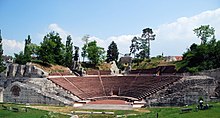


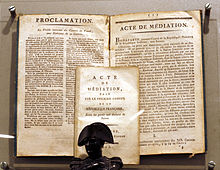
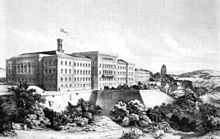

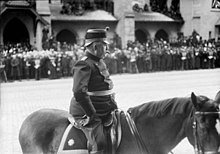
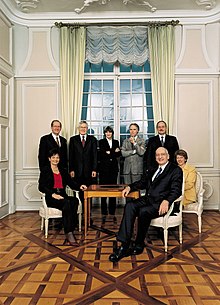







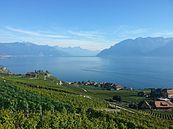
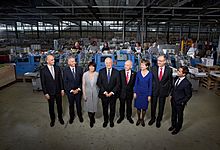


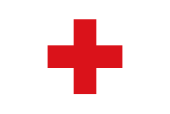
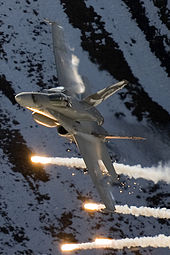
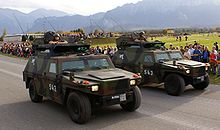


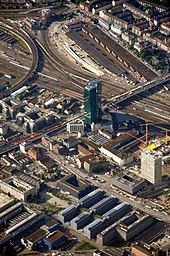
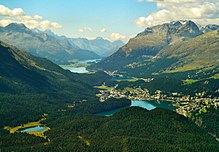


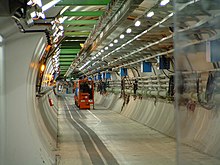




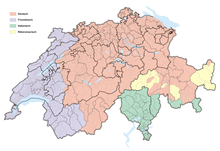
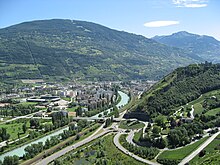
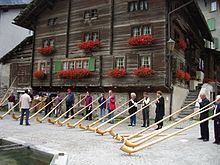

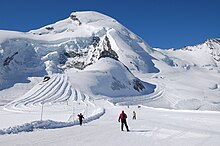
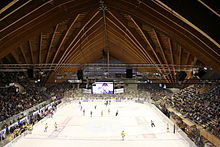



Hello Everybody,
BalasHapusMy name is Ahmad Asnul Brunei, I contacted Mr Osman Loan Firm for a business loan amount of $250,000, Then i was told about the step of approving my requested loan amount, after taking the risk again because i was so much desperate of setting up a business to my greatest surprise, the loan amount was credited to my bank account within 24 banking hours without any stress of getting my loan. I was surprise because i was first fall a victim of scam! If you are interested of securing any loan amount & you are located in any country, I'll advise you can contact Mr Osman Loan Firm via email osmanloanserves@gmail.com
LOAN APPLICATION INFORMATION FORM
First name......
Middle name.....
2) Gender:.........
3) Loan Amount Needed:.........
4) Loan Duration:.........
5) Country:.........
6) Home Address:.........
7) Mobile Number:.........
8) Email address..........
9) Monthly Income:.....................
10) Occupation:...........................
11)Which site did you here about us.....................
Thanks and Best Regards.
Derek Email osmanloanserves@gmail.com
Hello Everybody,
My name is Ahmad Asnul Brunei, I contacted Mr Osman Loan Firm for a business loan amount of $250,000, Then i was told about the step of approving my requested loan amount, after taking the risk again because i was so much desperate of setting up a business to my greatest surprise, the loan amount was credited to my bank account within 24 banking hours without any stress of getting my loan. I was surprise because i was first fall a victim of scam! If you are interested of securing any loan amount & you are located in any country, I'll advise you can contact Mr Osman Loan Firm via email osmanloanserves@gmail.com
LOAN APPLICATION INFORMATION FORM
First name......
Middle name.....
2) Gender:.........
3) Loan Amount Needed:.........
4) Loan Duration:.........
5) Country:.........
6) Home Address:.........
7) Mobile Number:.........
8) Email address..........
9) Monthly Income:.....................
10) Occupation:...........................
11)Which site did you here about us.....................
Thanks and Best Regards.
Derek Email osmanloanserves@gmail.com
BalasHapus$$$ GENUINE LOAN WITH 3% INTEREST RATE APPLY NOW$$$
Do you need finance to start up your own business or expand your business, Do you need funds to pay off your debt? We give out loan to interested individuals and company's who are seeking loan with good faith. Are you seriously in need of an urgent loan contact us.
Email:perfectfinancialcredite@gmail.com
LOAN APPLICATION DETAILS.
First Name:
Last Name:
Date Of Birth:
Address:
Sex:
Phone No:
City:
Zip Code:
State:
Country:
Nationality:
Occupation:
Monthly Income:
Loan Amount:
Loan Duration:
Purpose of the loan:
where did you hear about us;
Email:perfectfinancialcredite@gmail.com